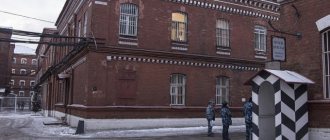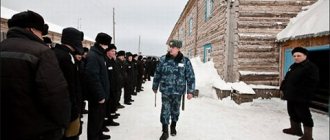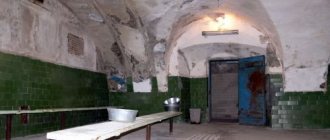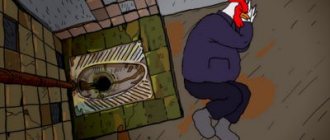Where did the terms "red" and "white" come from? The Civil War also saw the “Greens”, “Cadets”, “Socialist Revolutionaries” and other formations. What is their fundamental difference?
In this article, we will not only answer these questions, but also briefly get acquainted with the history of the formation of Soviet power in the country. Let's talk about the confrontation between the White Guard and the Red Army.
Origin of the terms "red" and "white"
Today, the history of the Fatherland is of less and less concern to young people. According to polls, many have no idea who Lenin is, let alone the Patriotic War of 1812...
However, such words and phrases as “red” and “white”, “Civil War” and “October Revolution” are still heard. Most people, however, do not know the details, but they have heard the terms.
Let's take a closer look at this issue. We should start with where the two opposing camps came from - “white” and “red” in the Civil War. In principle, it was simply an ideological move by Soviet propagandists and nothing more. Now you will figure out this riddle yourself.
If you turn to textbooks and reference books of the Soviet Union, they explain that the “whites” are the White Guards, supporters of the Tsar and enemies of the “reds”, the Bolsheviks.
It seems that everything was so. But in fact, this is another enemy that the Soviets fought against.
The country has lived for seventy years in confrontation with fictitious opponents. These were the “whites,” the kulaks, the decaying West, the capitalists. Very often, such a vague definition of the enemy served as the foundation for slander and terror.
Next we will discuss the causes of the Civil War. “Whites,” according to Bolshevik ideology, were monarchists. But here’s the catch: there were practically no monarchists in the war. They had no one to fight for, and their honor did not suffer from this. Nicholas II abdicated the throne, and his brother did not accept the crown. Thus, all tsarist officers were free from the oath.
Where then did this “color” difference come from? If the Bolsheviks really had a red flag, then their opponents never had a white one. The answer lies in the history of a century and a half ago.
The Great French Revolution gave the world two opposing camps. The royal troops carried a white banner, the symbol of the dynasty of French rulers. Their opponents, after seizing power, hung a red canvas in the window of the city hall as a sign of the introduction of wartime. On such days, any gatherings of people were dispersed by soldiers.
The Bolsheviks were opposed not by monarchists, but by supporters of the convening of the Constituent Assembly (constitutional democrats, cadets), anarchists (Makhnovists), “green army men” (fought against the “red”, “white”, interventionists) and those who wanted the separation of their territory into a free state .
Thus, the term "white" was cleverly used by ideologues to define a common enemy. His winning position was that any Red Army soldier could explain in a nutshell what he was fighting for, unlike all the other rebels. This attracted ordinary people to the side of the Bolsheviks and made it possible for the latter to win the Civil War.
Prerequisites for the war
When studying the Civil War in class, a table is essential for a good understanding of the material.
Below are the stages of this military conflict, which will help you better navigate not only the article, but also this period in the history of the Fatherland. Stages of military conflict
| Stages | Dates | Events |
| 1 | February–March 1917 | Overthrow of autocracy, division of society. |
| 2 | March–October 1917 | Intensification of confrontation in society. |
| 3 | October 1917–March 1918 | Liquidation of the Provisional Government. Establishment of Soviet power. The spread of armed conflict. |
| 4 | March–June 1918 | Increase in violence and terror. Formation of the Red Army and the White. |
| 5 | Summer 1918 - end of 1920 | A war involving regular troops, including foreign ones. Militarization of the economy. |
| 6 | 1921–1922 | Attenuation, localization and end of the Civil War. |
Now that we have decided who the “reds” and “whites” are, the Civil War, or rather its stages, will be more understandable. You can begin to study them in more depth. It's worth starting with the premises.
So, the main reason for such intense passions, which later resulted in a five-year Civil War, was the accumulated contradictions and problems.
First, the Russian Empire's involvement in World War I destroyed the economy and depleted the country's resources. The bulk of the male population was in the army, agriculture and urban industry fell into decay. The soldiers were tired of fighting for other people's ideals when there were hungry families at home.
The second reason was agricultural and industrial issues. There were too many peasants and workers who lived below the poverty line. The Bolsheviks took full advantage of this.
In order to turn participation in the world war into an inter-class struggle, certain steps were taken.
First, the first wave of nationalization of enterprises, banks, and lands took place. Then the Brest-Litovsk Treaty was signed, which plunged Russia into the abyss of complete ruin. Against the backdrop of general devastation, the Red Army men carried out terror in order to stay in power.
To justify their behavior, they built an ideology of struggle against the White Guards and interventionists.
This video is not available.
Red Zone-Prison for our own! . Crime. A reputable channel will offer you new meta videos about thieves tattoos. There are four colors in prison: - these are bandits who are clever convicts. The thieves are the real power in some camps, the power that butts heads with the official power, that is, with the owners of the zone.
— these prisoners do not claim any prison power and do not interfere with the administration of the zone.
In a word, men are convicts who want to return to everyday life after serving time. The goats are the caretakers of the punishment cell. You can touch the goats, but the common fund is closed to them. - these are omitted. They are brutally framed and forced to live in trees.
Roosters have a separate bed. To finish with castes, we need to mention a few more groups. In addition to “chushkov” and “devils”, there are also “sixes” in the zones - servants.
Sixes include people who are too weak or helpful. Both in prisons and in camps, excessive helpfulness is not honored.
If you are asked to do something, say, wash someone else’s socks, and you agree, you’ll be a six. Even if you do it for a fee. In prison, it is customary to look after yourself. Anyone who cannot endure difficulties, who starts doing and doing everything for a piece of bread, does not deserve respect.
But, you understand, this does not mean that you should not fulfill any requests at all. It all depends on the situation in which the request is fulfilled, and on who and how it is fulfilled.
Sometimes even a person who gives a mug of water becomes a six. Other passive homosexuals differ from roosters - the personal lovers of thieves, all these Jackdaws, Svetkas, Mashkas. They don’t beat them, they don’t keep them in a black body, on the contrary, they excuse them from work - so that they are soft.
But they are also not allowed to do too much. It’s better not to mess with these individuals. The “sniffs” stay apart in the zones - orderlies in detachments, cleaners in headquarters, canteens, medical units, etc. This is also a low-respect public, something like goats of the latest analysis. Subscribe to the channel and watch the very first video about the pre-trial detention center, as well as films about the zone. Subscribe
Background
Let's take a closer look at why the Civil War began. The table we provided earlier illustrates the stages of the conflict. But we will start with the events that occurred before the Great October Revolution.
Weakened by its participation in the First World War, the Russian Empire declines. Nicholas II abdicates the throne. More importantly, he does not have a successor. In light of such events, two new forces are being formed simultaneously - the Provisional Government and the Council of Workers' Deputies.
The former are beginning to deal with the social and political spheres of the crisis, while the Bolsheviks concentrated on increasing their influence in the army. This path subsequently led them to the opportunity to become the only ruling force in the country. It was the confusion in government that led to the formation of “reds” and “whites”. The civil war was only the apotheosis of their differences. Which is to be expected.
Where in Russia is the zone = colony for cops located and what is it called?
red zone in KalymaAnd why the cop is worse than you Ryazan region FBU IK 3 (YaM 401/3) strict security for former law enforcement officers (1210 places), including with ECPT (80 places), general sections (320 places) and colonies -settlements (200 places); Skopinsky district, village. October; tel. (49156) 7-44-83 Republic of Mordovia FBU IK 5 (ZH 385/5) strict regime for former law enforcement officers (1090 menst); Zubovo-Polyansky district, village.
Leplay; tel. (83458) 5-31-05, 5-31-14, 3-21-14, 5-31-06 Nizhny Novgorod region FBU IK 11 (UZ 62/11) strict regime for former law enforcement officers (1330 places), in including with general regime areas (500 places), colony settlements (70 places); Bor, 2nd microdistrict, 1; tel. (83159) 9-66-20, 9-16-14, 9-66-15 Orenburg region FBU KP 15 colony-settlement for former law enforcement officers (200 places); Kuvandyk district village.
Red zone. Life in prison. Attitude towards roosters
How to survive in the zone [Advice from an experienced prisoner] Krestovy Fedor “Red” zone.
“Red” zone - what is it and where are these institutions located?
Unlimited Zone "red" - general or strict regime. As you know, in places of deprivation of liberty, convicts do not like activists (prisoners who are assistants to the administration). The employees also despise them, but use them for their own purposes to keep the masses of the special contingent under control. In addition, activists agree to carry out tasks that a normal prisoner would never do.
All sorts of supply managers, chairmen of discipline and order sections and other “wool” in zones where the authorities are spreading the “red movement” are becoming completely impudent. "Thieves' move" is prohibited there.
In general, even a tolerable existence is prohibited there. The cops do not personally keep order, but only guide and support their henchmen. They impose discipline, driving it to the point of insanity.
Ordinary prisoners literally cannot breathe calmly from getting up until bedtime.
October Revolution
In fact, the tragedy of the Civil War begins with the October Revolution. The Bolsheviks were gaining strength and moving more confidently to power. In mid-October 1917, a very tense situation began to develop in Petrograd.
October 25 Alexander Kerensky, head of the Provisional Government, leaves Petrograd for Pskov for help. He personally assesses the events in the city as an uprising.
In Pskov, he asks General Dukhonin to help him with troops. Kerensky seems to be receiving support from the Cossacks, but suddenly the cadets leave the regular army. Now constitutional democrats refuse to support the head of government.
Not finding adequate support in Pskov, Alexander Fedorovich goes to the city of Ostrov, where he meets with General Krasnov. At the same time, the Winter Palace was stormed in Petrograd. In Soviet history, this event is presented as key. But in fact it happened without resistance from the deputies.
After a blank shot from the cruiser Aurora, sailors, soldiers and workers approached the palace and arrested all members of the Provisional Government present there. In addition, the Second Congress of Soviets took place, where a number of major declarations were adopted and executions at the front were abolished.
In view of the coup, Krasnov decides to provide assistance to Alexander Kerensky. On October 26, a cavalry detachment of seven hundred people leaves towards Petrograd. It was assumed that in the city itself they would be supported by an uprising by the cadets. But it was suppressed by the Bolsheviks.
In the current situation, it became clear that the Provisional Government no longer had power. Kerensky fled, General Krasnov negotiated with the Bolsheviks the opportunity to return to Ostrov with his detachment without hindrance.
Meanwhile, the Socialist Revolutionaries begin a radical struggle against the Bolsheviks, who, in their opinion, have acquired greater power. The response to the murders of some “red” leaders was terror by the Bolsheviks, and the Civil War (1917-1922) began. Let us now consider further events.
“Red Duck”: a zone in which people sit “without understanding”
Nizhny Tagil correctional colony No. 13 is popularly called the “Red Duck”. It is believed that the word “duck” was attached to the name of the institution as a synonym for gossip, denunciation, through which “enemies of the people” ended up there, because the colony began working in 1957 in the NKVD system.
And the “red” zone is considered to be the one where complete control of the administration is established, and life goes according to the regulations, and not according to concepts. Colony No. 13 is an exemplary institution.
Most of the contingent are former law enforcement officers and military personnel: investigators, district police officers, traffic police officers. There are no ranks here - a private and a general may be on neighboring bunks. All of them are serving sentences for especially serious crimes: murder, robbery, bribery.
The institution is designed to accommodate about two thousand people.
There is a strict daily routine: getting up, exercise, daily inspection, work, personal time, meals, lights out.
Establishment of "red" power
As we said above, the tragedy of the Civil War began long before the October Revolution. The common people, soldiers, workers and peasants were dissatisfied with the current situation. If in the central regions many paramilitary detachments were under the close control of Headquarters, then in the eastern detachments a completely different mood reigned.
It was the presence of a large number of reserve troops and their reluctance to enter into a war with Germany that helped the Bolsheviks quickly and bloodlessly receive the support of almost two-thirds of the army. Only 15 large cities resisted the “red” authorities, while 84 passed into their hands on their own initiative.
An unexpected surprise for the Bolsheviks in the form of stunning support from confused and tired soldiers was declared by the “Reds” as a “triumphant procession of the Soviets.”
The civil war (1917-1922) only worsened after the signing of the Brest-Litovsk Peace Treaty, which was devastating for Russia. Under the terms of the treaty, the former empire lost more than a million square kilometers of territory. These included: the Baltic states, Belarus, Ukraine, the Caucasus, Romania, Don territories. In addition, they had to pay Germany six billion marks of indemnity.
This decision caused protest both within the country and from the Entente. Simultaneously with the intensification of various local conflicts, military intervention by Western states on Russian territory begins.
The entry of Entente troops was reinforced by the uprising of the Czechoslovak corps in Siberia and the revolt of the Kuban Cossacks under the leadership of General Krasnov. The defeated detachments of the White Guards and some interventionists went to Central Asia and continued the struggle against Soviet power for many years.
Second period of the Civil War
It was at this stage that the White Guard Heroes of the Civil War were most active. History has preserved such surnames as Kolchak, Yudenich, Denikin, Yuzefovich, Miller and others.
Each of these commanders had his own vision of the future for the state. Some tried to interact with the Entente troops in order to overthrow the Bolshevik government and still convene the Constituent Assembly. Others wanted to become local princelings. This includes people like Makhno, Grigoriev and others.
The difficulty of this period lies in the fact that as soon as the First World War was completed, German troops had to leave Russian territory only after the arrival of the Entente. But according to a secret agreement, they left earlier, handing over the cities to the Bolsheviks.
As history shows us, it is after this turn of events that the Civil War enters a phase of particular cruelty and bloodshed. The failure of commanders oriented towards Western governments was further aggravated by the fact that they had a catastrophic shortage of qualified officers. Thus, the armies of Miller, Yudenich and some other formations disintegrated only because, with a lack of mid-level commanders, the main influx of forces came from captured Red Army soldiers.
Messages in newspapers of this period are characterized by headlines of this type: “Two thousand military personnel with three guns went over to the side of the Red Army.”
The final stage
Historians tend to associate the beginning of the last period of the war of 1917–1922 with the Polish War. With the help of his western neighbors, Piłsudski wanted to create a confederation with territory from the Baltic to the Black Sea. But his aspirations were not destined to come true. The armies of the Civil War, led by Egorov and Tukhachevsky, fought their way deep into Western Ukraine and reached the Polish border.
Victory over this enemy was supposed to rouse the workers in Europe to fight. But all the plans of the Red Army leaders failed after a crushing defeat in the battle, which was preserved under the name “Miracle on the Vistula.”
After the conclusion of a peace treaty between the Soviets and Poland, disagreements begin in the Entente camp. As a result, funding for the “white” movement decreased, and the Civil War in Russia began to decline.
In the early 1920s, similar changes in the foreign policies of Western states led to the recognition of the Soviet Union by most countries.
The heroes of the Civil War of the final period fought against Wrangel in Ukraine, the interventionists in the Caucasus and Central Asia, in Siberia. Among the particularly distinguished commanders, Tukhachevsky, Blucher, Frunze and some others should be noted.
Thus, as a result of five years of bloody battles, a new state was formed on the territory of the Russian Empire. Subsequently, it became the second superpower, whose only rival was the United States.
Login to the site
In Russia there are two famous zones, known throughout the former USSR, and even abroad. These are the Orenburg “Black Dolphin” and the “White Swan” in Solikamsk.
The White Swan colony debunked the myth about the beautiful and free life of thieves in prison. Dozens, hundreds of thieves in law were “unthrown” here.
Today, within these walls there is one of the Russian “life-long” zones, as well as colonies of strict and special regimes. The last days of Salman Raduev passed here.
On January 5, 2008, the famous colony “BL”, as well as other colonies that were part of the Administration of Usol Camps (Usollag), celebrated their 70th anniversary.
Today our readers have the opportunity to learn about the “White Swan” from the mouth of the head of the Federal State Institution OIK-2 of the Federal Penitentiary Service of Russia in the Perm Territory, Colonel of the Ministry of Internal Affairs [2] Ashot Sargsyan.
How they “sit” in the “red” zone (5 photos)
As is known, police officers, police officers and law enforcement officers convicted of criminal charges are put in special zones, colloquially referred to as “cop zones.” Under Soviet rule, there was only one correctional colony in the country for convicted law enforcement officers - in Nizhny Tagil. Now there are five of them. The need for such “special zones” is dictated by life.
In an ordinary “thieves’ zone”, a former employee (BS) – “secret officer” will not last even a day. Killing a “cop” is an honor for any criminal and a ticket to a higher “suit” of the criminal hierarchy. ITK-13 in Nizhny Tagil appeared in 1951, during the period of confrontation between “thieves in law” and “thieves in law”, those who collaborated with the authorities during the war, fought in penal battalions, and generally forgot for a while in the face of a terrible danger about "thieves' concepts."
Some had to be separated from others, and this is how the legendary “Tagil” appeared.
Reasons for victory
Let's figure out why the “whites” were defeated in the Civil War. We will compare the assessments of the opposing camps and try to come to a common conclusion.
Soviet historians saw the main reason for their victory in the fact that there was massive support from the oppressed sections of society. Particular emphasis was placed on those who suffered as a result of the 1905 revolution. Because they unconditionally went over to the side of the Bolsheviks.
“Whites,” on the contrary, complained about the lack of human and material resources. In occupied territories with a population of millions, they could not carry out even the minimum mobilization to replenish their ranks.
Particularly interesting are the statistics provided by the Civil War.
“Reds” and “Whites” (the table below) especially suffered from desertion. Unbearable living conditions, as well as the lack of clear goals, made themselves felt. The data concerns only the Bolshevik forces, since the White Guard records did not preserve clear figures. Deserters in the Red Army in 1919
| Month | Number of persons |
| February | More than 26 thousand. |
| March | More than 54 thousand. |
| May | More than 78 thousand. |
| June | More than 146 thousand. |
| July | More than 270 thousand. |
| August | More than 299 thousand. |
The main point that modern historians note was the political sphere of the conflict.
The White Guards, firstly, had no centralized command and minimal cooperation between units. They fought locally, each for their own interests. The second feature was the absence of political workers and a clear program. These aspects were often assigned to officers who only knew how to fight, but not how to conduct diplomatic negotiations.
The Red Army soldiers created a powerful ideological network. A clear system of concepts was developed that was drummed into the heads of workers and soldiers. The slogans made it possible for even the most downtrodden peasant to understand what he was going to fight for.
It was this policy that allowed the Bolsheviks to receive maximum support from the population.
Consequences
The victory of the “Reds” in the Civil War was very costly for the state. The economy was completely destroyed. The country lost territories with a population of more than 135 million people.
Agriculture and crop yields and food production have declined by 40–50 percent. The surplus appropriation system and the “red-white” terror in different regions led to the death of a huge number of people from starvation, torture and execution.
Industry, according to experts, has slipped to the level of the Russian Empire during the reign of Peter the Great. Researchers say production levels have fallen to 20 percent of 1913 levels, and in some areas to 4 percent.
As a result, a massive outflow of workers from cities to villages began. Since there was at least some hope of not dying of hunger.
“Whites” in the Civil War reflected the desire of the nobility and higher ranks to return to their previous living conditions. But their isolation from the real sentiments that reigned among the common people led to the total defeat of the old order.
Authorities
0
The authorities of the cop zone at all times included former employees of correctional colonies, prison operatives, and “regime officers” of the pre-trial detention center. The elite also includes the criminal investigation team. These are harsh people, who have seen different types, and they prefer not to mess with such people. The next in the hierarchy of “trump suits” are employees of law enforcement units: riot police, special forces, capture groups, special rapid response units, various operational search groups. People who have gone through the school of such service can fight back against anyone.
×











